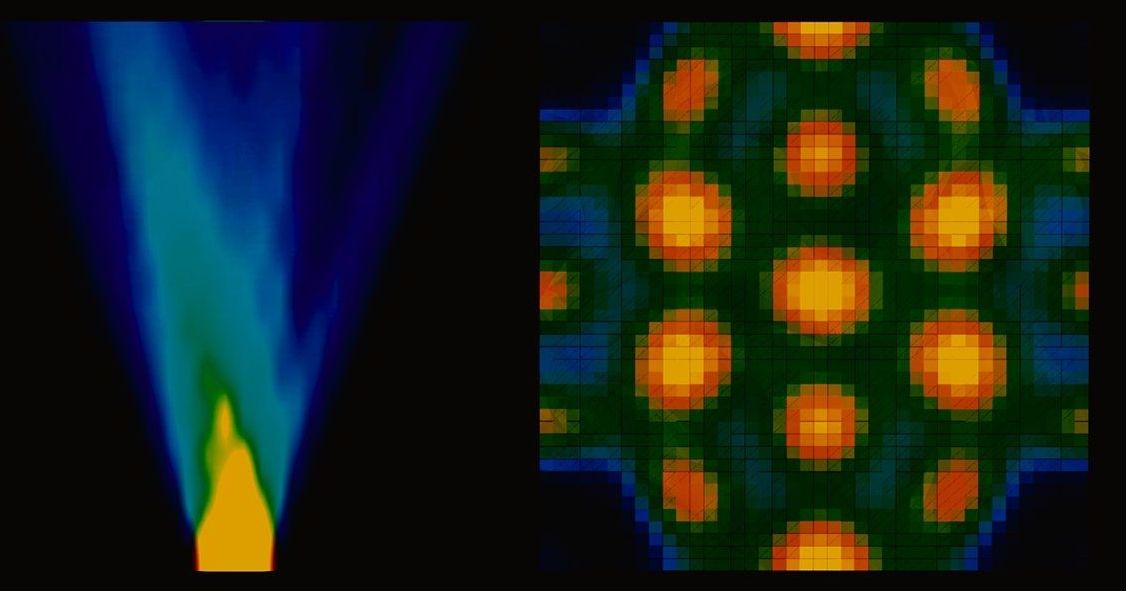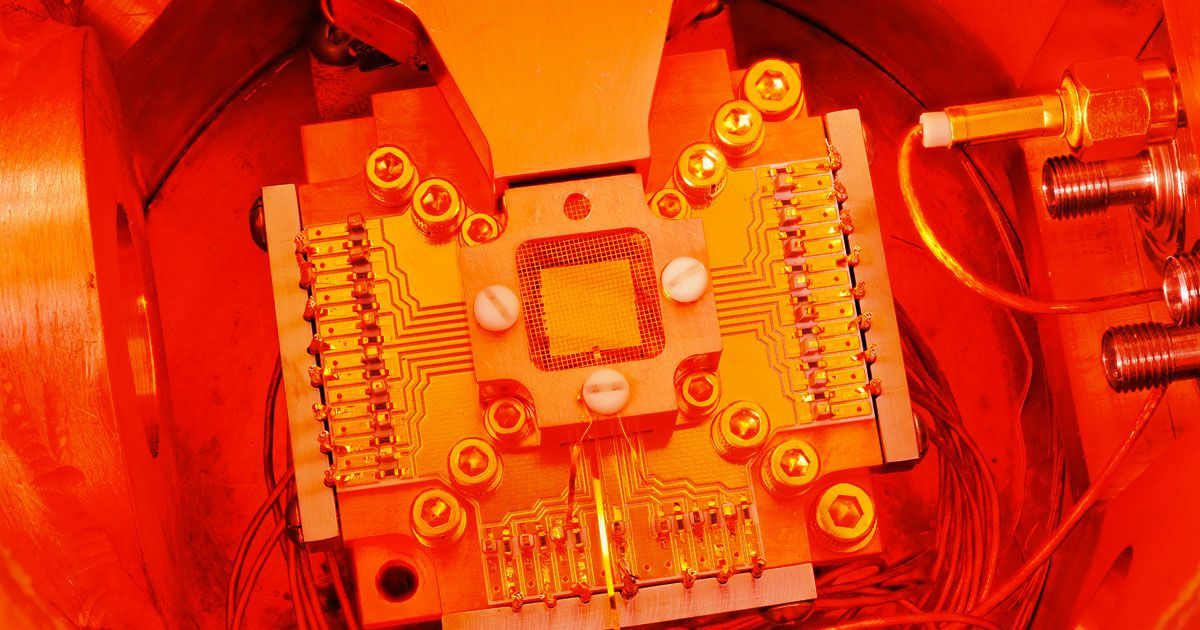The same codes needed to thwart errors in quantum computers may also give the fabric of space-time its intrinsic robustness.




Mark Zuckerberg and his pediatrician wife Priscilla Chan have sold close to 30 million shares of Facebook to fund an ambitious biomedical research project, called the Chan Zuckerberg Initiative (CZI), with a goal of curing all disease within a generation. A less publicized component of that US$5 billion program includes work on brain-machine interfaces, devices that essentially translate thoughts into commands.
From a report: One recent project is a wireless brain implant that can record, stimulate and disrupt the movement of a monkey in real time. In a paper published in the highly cited scientific journal Nature on Monday, researchers detail a wireless brain device implanted in a primate that records, stimulates, and modifies its brain activity in real time, sensing a normal movement and stopping it immediately. Those researchers are part of the Chan Zuckerberg Biohub, a non-profit medical research group within the CZI. Scientists refer to the interference as “therapy” because it is designed to be used to treat diseases like epilepsy or Parkinson’s by stopping a seizure or other disruptive motion just as it starts.
“Our device is able to monitor the primate’s brain while it’s providing the therapy so you know exactly what’s happening,” Rikky Muller, a co-author of the new study, told Business Insider. A professor of computer science and engineering at the University of California, Berkeley, Muller is also a Biohub investigator. The applications of brain-machine interfaces are far-reaching: while some researchers focus on using them to help assist people with spinal cord injuries or other illnesses that affect movement, others aim to see them transform how everyone interacts with laptops and smartphones. Both a division at Facebook formerly called Building 8 as well as an Elon Musk-founded company called Neuralink have said they are working on the latter.

Researchers from MIT and elsewhere have recorded, for the first time, the “temporal coherence” of a graphene qubit—meaning how long it can maintain a special state that allows it to represent two logical states simultaneously. The demonstration, which used a new kind of graphene-based qubit, represents a critical step forward for practical quantum computing, the researchers say.
Superconducting quantum bits (simply, qubits) are artificial atoms that use various methods to produce bits of quantum information, the fundamental component of quantum computers. Similar to traditional binary circuits in computers, qubits can maintain one of two states corresponding to the classic binary bits, a 0 or 1. But these qubits can also be a superposition of both states simultaneously, which could allow quantum computers to solve complex problems that are practically impossible for traditional computers.
The amount of time that these qubits stay in this superposition state is referred to as their “coherence time.” The longer the coherence time, the greater the ability for the qubit to compute complex problems.


https://paper.li/e-1437691924#/
On the second balmy day of the year in New York, Neil Harbisson, a Catalan artist, musician, and self-professed “cyborg,” walked into a café in the Nolita district of Manhattan. The actor Gabriel Byrne was sitting at a table in the corner. Harbisson approached. “May I do a sound portrait of you? It will just take one minute. For nine years, I’ve been listening to colors,” he explained.
Byrne eyed his questioner from under raised eyebrows. On a slight frame, the 30-year-old Harbisson wore a white T-shirt, deep-pink jeans and black-and-white showman’s brogues. His face was angular, with an aquiline nose and a chin smudged with grown-out stubble. A small plastic oval floated in front of his forehead, attached to the end of a flexible stem that reached around from the back of his head and over a sandy pageboy mop, like the light on the head of an angler fish. This “eyeborg,” as Harbisson calls it, converts light into audible sound, with a pitch that varies according to the color of the light.
With a good-natured shrug, Byrne relented. Harbisson darted down next to his quarry, intent, but with a boyish smile that betrayed his excitement. He pointed the eyeborg first at Byrne’s ear, then his lips, then his left eye, then the bridge of his nose, and finally his salt-and-pepper hair, scribbling down musical notes on the back of a cardboard coffee-holder. Byrne gave him his agent’s email. When Harbisson got back to a computer, he would make a sound file that combined the notes from each bit of Byrne’s anatomy, and send it back to the actor. Harbisson’s collection already included Prince Charles, Nicole Kidman, and Al Gore.
One small amoeba found a solution to the traveling salesman problem faster than our best algorithms. What does it know that we don’t?

These days, movies and video games render increasingly realistic 3D images on 2-D screens, giving viewers the illusion of gazing into another world. For many physicists, though, keeping things flat is far more interesting.
One reason is that flat landscapes can unlock new movement patterns in the quantum world of atoms and electrons. For instance, shedding the third dimension enables an entirely new class of particles to emerge—particles that that don’t fit neatly into the two classes, bosons and fermions, provided by nature. These new particles, known as anyons, change in novel ways when they swap places, a feat that could one day power a special breed of quantum computer.
But anyons and the conditions that produce them have been exceedingly hard to spot in experiments. In a pair of papers published this week in Physical Review Letters, JQI Fellow Alexey Gorshkov and several collaborators proposed new ways of studying this unusual flat physics, suggesting that small numbers of constrained atoms could act as stand-ins for the finicky electrons first predicted to exhibit low-dimensional quirks.

Today, the application of engineering methodologies to the rational modification of organisms is a persistent goal of synthetic biology. Most synthetic biologists describe biological engineering as a hierarchy, wherein parts (genes, DNA) are used to build devices (many genes together), which in turn can be used to construct systems (a series of many devices). The challenge in transforming synthetic biology into a true engineering discipline is that the parts, which are the rudimentary building blocks of higher-order constructions, are fundamentally limited by the rigor of their characterization. This is really the case in all established engineering disciplines. In electrical engineering, for instance, the baseline components (transistors, resistors, wires, etc.) have been characterized so well that children can use them and the resulting circuits behave as expected. Once all ‘parts’ are standardized, it may be possible for synthetic biologists to use individual DNA building blocks to construct entirely synthetic life forms from the bottom-up.
